Introduction
June in Canada is a time of vibrant celebration, reflection and recognition. This month marks both National Indigenous History Month and Pride Season in Canada – two important opportunities to honour the rich cultures, histories, and contributions of First Nations, Inuit, and Métis peoples, as well as celebrate the strength, diversity, and resilience of 2SLGBTQQIA+ peoples and communities.
Pride Month and National Indigenous History Month
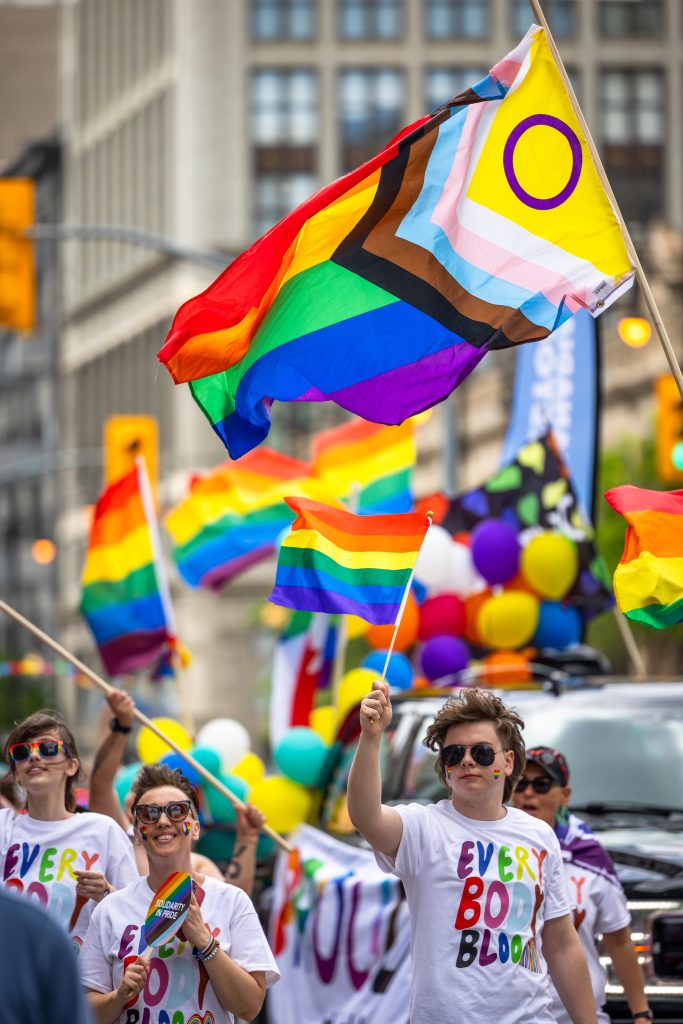
Pride Month in Canada has its roots in the broader global LGBTQ+ rights movement. It officially stems from grassroots activism and protest, particularly following key legal and grassroots events in the late 20th century, including the 1969 decriminalization of homosexuality in Canada and the first gay rights protest in 1971. The first Pride Week events occurred in Vancouver, Toronto, Montreal, and Ottawa in 1973. Today, June marks the celebration of 2SLGBTQQIA+ peoples and communities, and the summer-long celebrations across Canadian cities, provinces, and territories often extend into September.
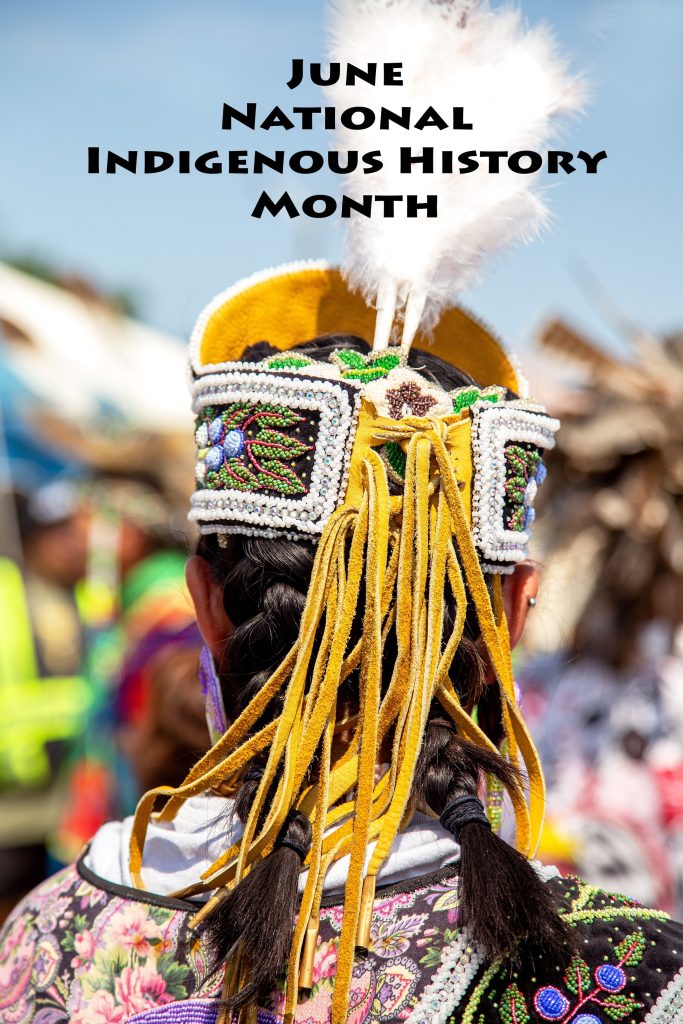
National Indigenous History Month was inspired by the letter-writing campaign run by Joely BigEagle-Kequahtooway to celebrate Indigenous people in Canada in 2007. In 2009, a unanimous motion was passed in the House of Commons designating June as National Indigenous History Month. The celebration also has its roots in National Aboriginal Day (now National Indigenous Peoples Day), established in 1996 and celebrated annually on June 21 – the summer solstice – which holds cultural significance for many Indigenous communities. The month provides an opportunity to learn about the contributions and lived experiences of Indigenous Peoples, while also acknowledging the ongoing impacts of colonization and the importance of Reconciliation.
In this blog, we recognize the significance of these intersecting celebrations. Both National Indigenous History Month and Pride Month are dedicated to supporting and discussing the unique histories and resilience of Indigenous and 2SLGBTQQIA+ people in Canada. While the histories of recognition and celebration differ for each, the month of June presents opportunities to examine the experiences and understandings of intersectional identities, including those of Two-Spirit people.
What Does it Mean to be Two-Spirit?
The expression ‘Two-Spirit’, ‘2-Spirit’, or ‘Two-Spirited’ is used by Indigenous peoples across Canada to refer to a range of sexual and gender identities and may hold different meanings for each individual or culture. Typically, Two-Spirit refers to a person who carries feminine and masculine spirits. Its contemporary meaning is tied to the Anishinaabemowin term niizh manidoowag, which describes people who exhibit both feminine and masculine characteristics.
The concept of non-binary gender and sexuality has existed in various Indigenous cultures since before colonization. The term ‘Two-Spirit’ was originally introduced in 1990 by Elder Myra Laramee and elaborated upon by Albert McLeod to reflect the fluidity of gender and sexual identity as connected to spirituality and distinct from Western understandings of binary gender. 2025 marks the 35th anniversary of the expression ‘Two-Spirit’.
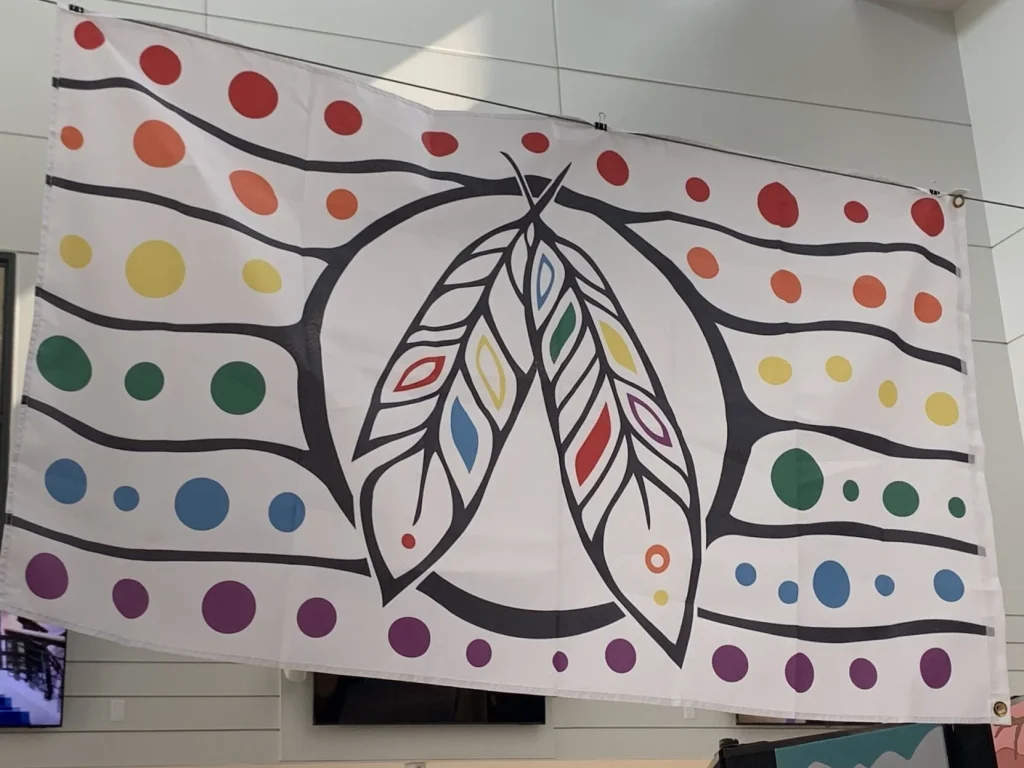
Two-Spirit Existence Across Indigenous Cultures
Prior to contact with settlers, many Indigenous cultures across Turtle Island had their own understandings of and expressions for individuals who did not fit into the gender binary of woman or man. Historically, Two-Spirit people were understood to possess unique gifts to see things through both feminine and masculine eyes. As such, Two-Spirit people were given important roles in their Nations, including leaders, mediators, or medicine people.
In some Indigenous cultures, Two-Spirit referred to a spiritual identity, acknowledging the ways in which Two-Spirit people were connected to the spiritual world. Within this understanding of Two-Spirit identity, individuals were often encouraged to become healers, keepers of traditions, and ceremonial leaders. As different Indigenous communities prior to colonization were not rooted in heteronormativity, diverse gender, spiritual, cultural, and social roles and identities were celebrated and respected.
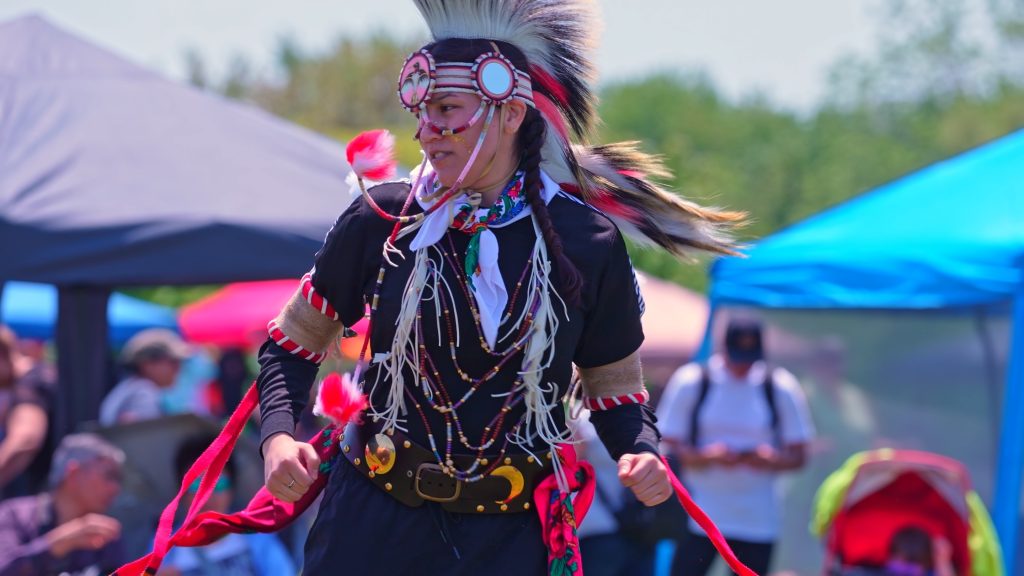
Indigenous cultures hold differing interpretations, beliefs, and roles for Two-Spirit people, dependent on their Traditional Knowledge. Additionally, many Indigenous cultures have specific terminology in their own languages for individuals who are now commonly referred to as Two-Spirit in English. Some individuals in the present day continue to use terminology specific to their language to represent their identity and preserve the cultural intent.
A few examples of gender-diverse expressions from First Nations and Inuit languages are listed below:
- Agokwe = man who is also a woman
- Agokwe-nini = woman who is also a man
- Okitcitakwe = warrior woman
- Ogokwe = warrior man
Cree:
- Napêw iskwêwisêhot = man who dresses as a woman
- Iskwêw ka napêwayat = woman who dresses as a man
- Ayahkwêw = man living as a woman
- Înahpîkasoht = woman living as a man
- Iskwewak (Plains Cree) = women-centred identities/non-binary roles
- Iskwêhkân = one who acts or lives as a woman
- Napêhkân = one who acts or lives as a man
- Winkta = male-assigned
- Winkte = half man, half woman
- Wintike = double woman
- Sipiniq = infant whose sex changes at birth
- Arnaasiaq = man who should have been a woman
- Angutaasiaq = woman who should have been a man
- Choupan = man who expresses gender through women’s clothing
- Titqattek = woman who takes on traditionally masculine roles
- Etuijijaqimijuinu’k = Two-Spirit (present-day term)
- Tuučuk = more like a woman
- Čakusšƛ = becoming a man
- Aakíí’skassi = man who performs roles traditionally associated with women
Unfortunately, some languages and terminology around First Nations, Inuit, and Métis understandings of non-binary gender, sexuality, and spirituality have been lost due to the impacts of colonization and forced assimilation. Language revitalization and movements to reclaim Two-Spirit roles and identities in Indigenous communities are deeply intertwined. The importance of using and maintaining languages to preserve unique identities, traditions, and spiritual wisdom becomes clear for current and future generations to prevent further erasure of Indigenous languages, culture, and identity.
Colonial Influences on Gender, Sexuality, and Spirituality
The introduction of colonial norms and limited notions of gender, sexuality, and spirituality has contributed heavily to negative ideations and erasure of Two-Spirit and gender-diverse people. Early Christianity believed in only two genders and rejected the idea of relationships beyond a woman and a man. Settlers began referring to individuals outside of the gender binary as ‘berdaches’, rooted in the Persian word for “slave” in a sexual connotation. Through these Christian ideals, Two-Spirit and gender-diverse people began to experience growing intolerance and violence at the hands of settlers.
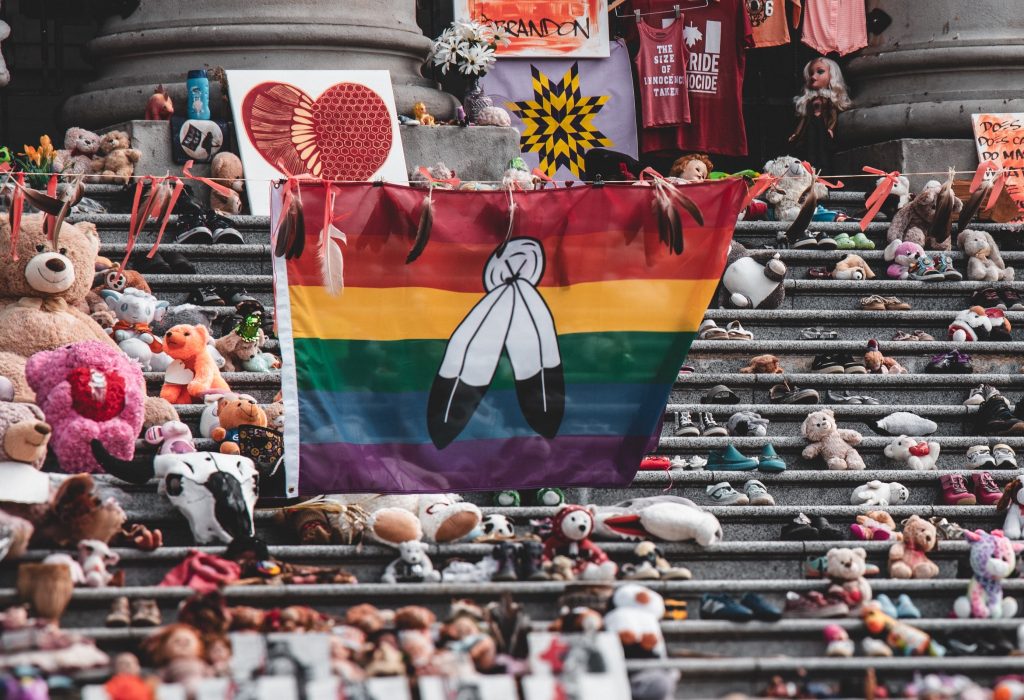
Colonial norms continued to be enforced through the criminalization of polygamy and same-sex relationships, as well as through the Indian Act and mandatory attendance at Residential Schools. At these schools, children were forced into female/male gender roles and were punished if they exhibited gender and/or sexual expressions outside of the gender-binary system. Two-Spirit people continued to be silenced and pushed to fit within binary roles of gender and sexuality in their homes and Nations, as churches were established throughout many First Nations. With the spread of church teachings across Nations, fewer records of Two-Spirit people became available from the 19th to the 20th centuries. Despite intentional efforts to erase spirituality and impose binary expressions of gender and sexuality, Two-Spirit people persisted.
Present Day Experiences of Two-Spirit People
With the creation of the expression niizh manidoowag, or Two-Spirit, in 1990, Two-Spirit people across Canada have been empowered to reclaim identities stolen and erased through colonialism. Today, many Indigenous people use the term Two-Spirit as a fluid expression that encompasses a range of queer identities, including lesbian, gay, bisexual, transgender, queer, questioning, intersex, asexual, and other gender, sexual, or spiritual experiences.
Since the 1990s, movements have been increasingly led by Two-Spirit people and organizations to revitalize traditional teachings, language, and community roles while creating space and opportunities for new understandings and points of inclusion for Two-Spirit people. For Two-Spirit artist, Veronica Johnny, embracing traditional culture while blending contemporary messages has allowed her to explore, understand, and celebrate her different sides as a Two-Spirit person. She speaks of the power of expression through music and the arts, in addition to her experiences embracing a role as a hand drummer and drum carrier.
Despite increasing awareness and acceptance in Canada, Two-Spirit people continue to face racism, sexual and gender discrimination, and violence based on their intersecting identities as Indigenous and queer people.
Celebrating Intersectional Identities and Two-Spirit People
June serves as a reminder to learn about and reflect on the histories and current realities associated with National Indigenous History Month and Pride Month. It is important, however, to continue these reflections and understandings to increase visibility and acceptance of intersectional identities, including the experiences of Two-Spirit people.
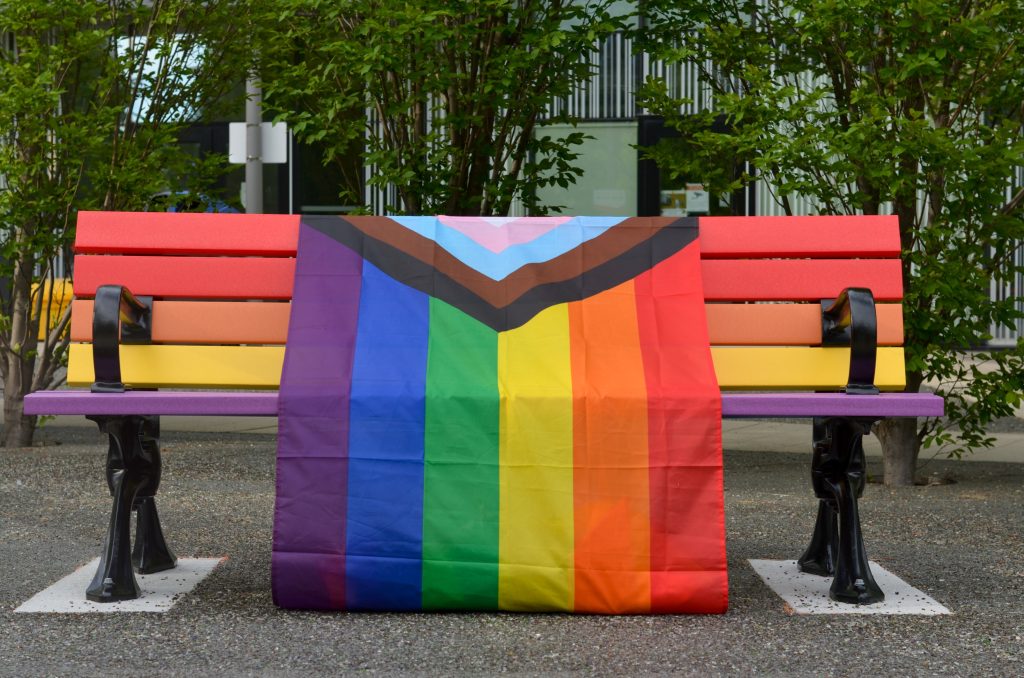
Individuals and groups may be privileged or oppressed depending on their identities. This is especially true for people with multiple intersecting identities, such as Two-Spirit people, who are both Indigenous and queer. The term “Two-Spirit” is unique to Indigenous cultures. In continuing to centre Two-Spirit people, stories, and experiences and through revitalizing language and culture, pathways are paved for future generations to feel valued and accepted.
In the past two years alone, there have been increasing examples of Two-Spirit visibility in the media, such as the creation of the first Two-Spirit Pride flag, the first Two-Spirit couple to win The Amazing Race Canada, the launch of a Two-Spirit documentary and curriculum, and the International Day of Pink’s celebration of the 35th anniversary of the term Two-Spirit. Increased visibility and acceptance can lead to better, more wholistic health and wellbeing outcomes for Two-Spirit people in Canada and beyond.










Share the article